Canon FD 35mm f2 S.S.C. is a highly rated medium-wide-angle lens for the Canon FD system. It was initially released in 1971 and still offers excellent performance today. Canon made six slightly different versions, some more sought after than others.
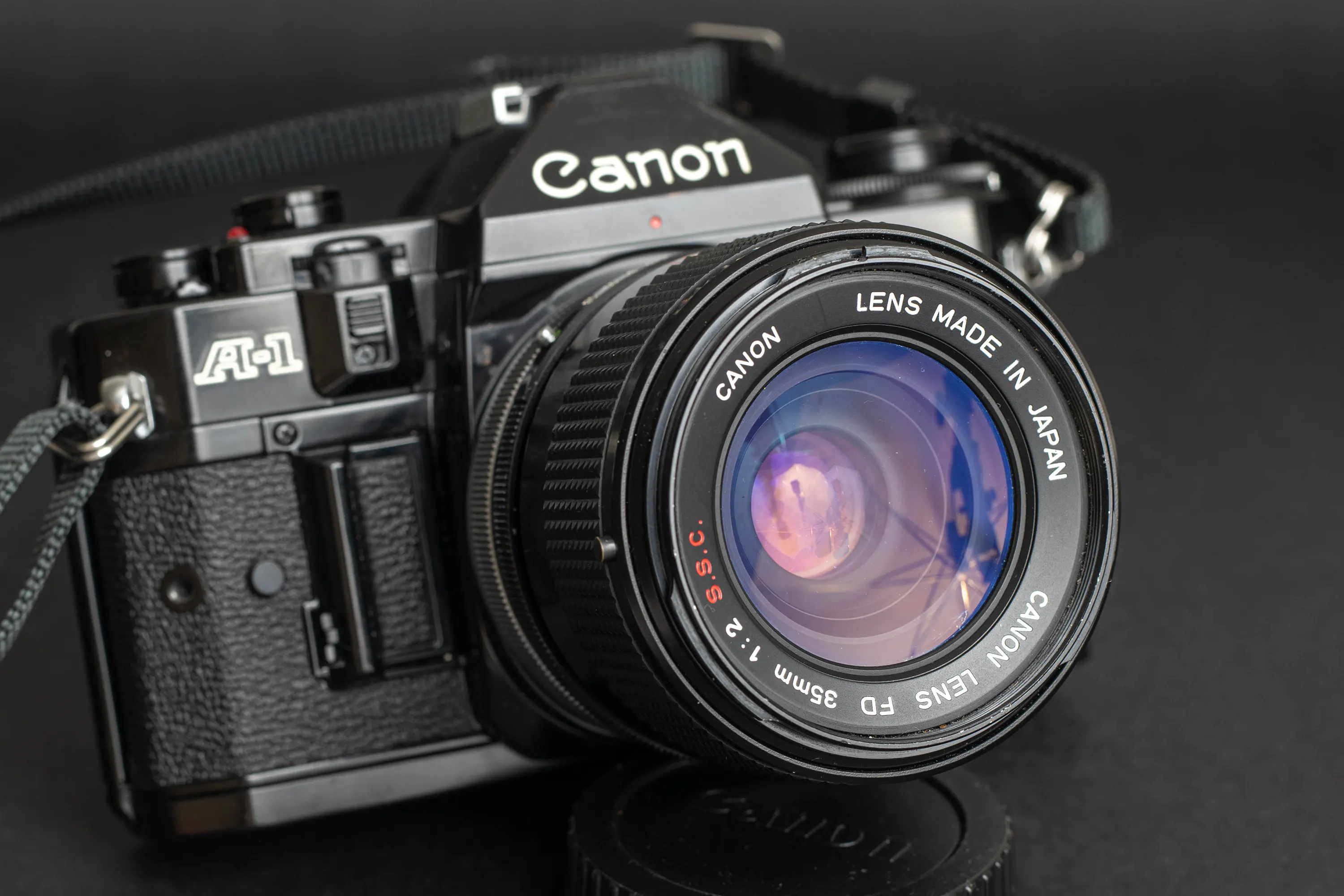
Details about Canon FD 35mm f2
Canon FD 35mm f2 lens is a collection of unique features – Canon put in the effort to create the fastest 35mm lens with outstanding performance: floating elements resolve retrofocus design drawbacks and improve performance at close distances. The early versions use expensive thoriated glass formulas with advantageous optical properties. Early versions also utilise the concave front element – a rarity in lens design. This lens was so unique it was worthy of a patent.
The Canon FD 35mm f2 is not the first lens to use floating elements. Minolta patented the floating element system in 1958, but the first consumer lens was the Meyer Domiron 50mm f2, released in 1960. However, Canon FD 35mm f2 is the first prime lens in the FD lineup to use floating elements.
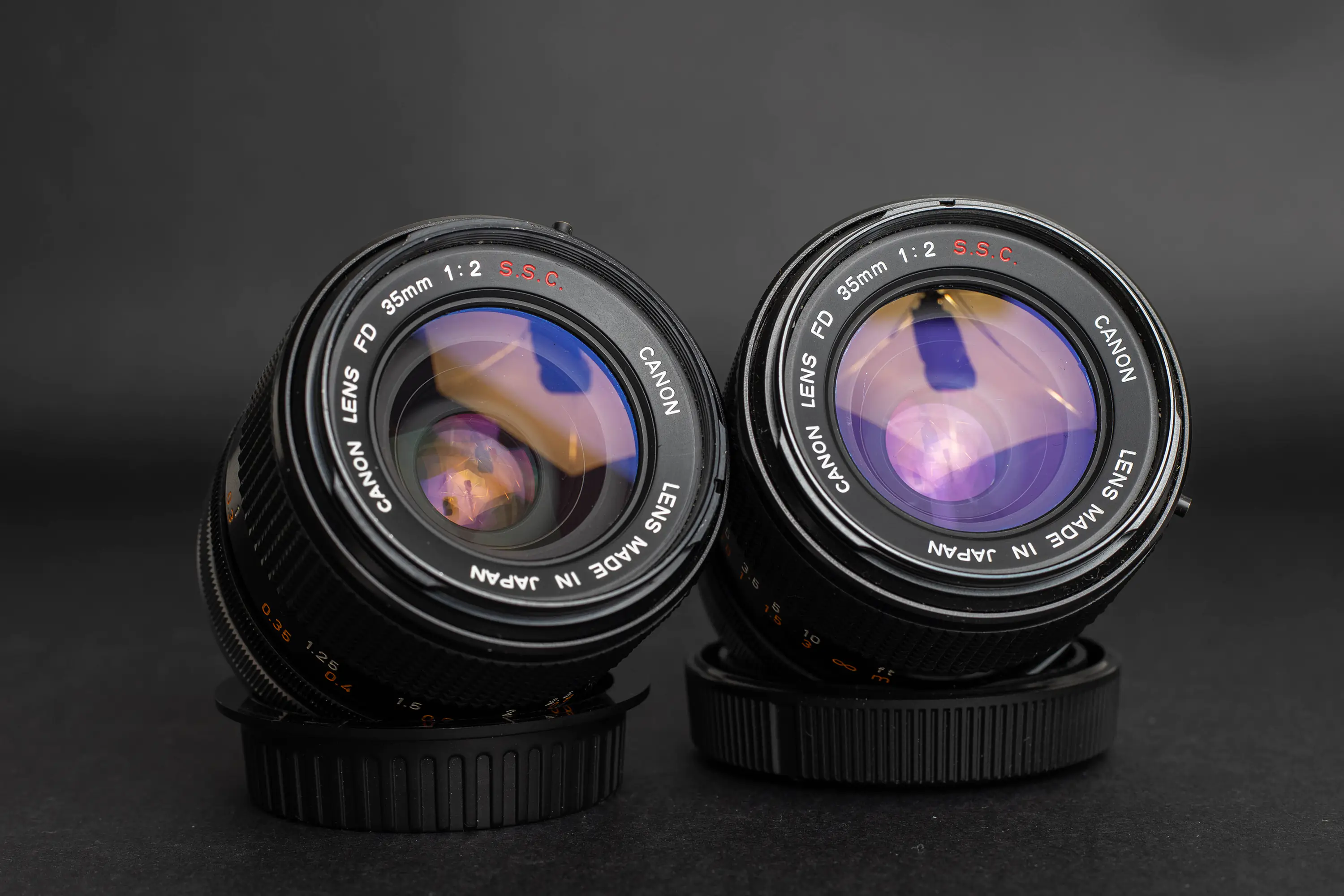
A reverse telephoto type lens adapted for preventing the deterioration of image at the time of close shot, comprising a front group having a negative refractive power and a back lens group having a positive refractive power, wherein the latter lens group is further divided into two positive lens groups, which a spaced by a variable air interval, and whole lens system may be shifted approximately in proportion to the variation of said interval. – US Patent number 3,748,022.
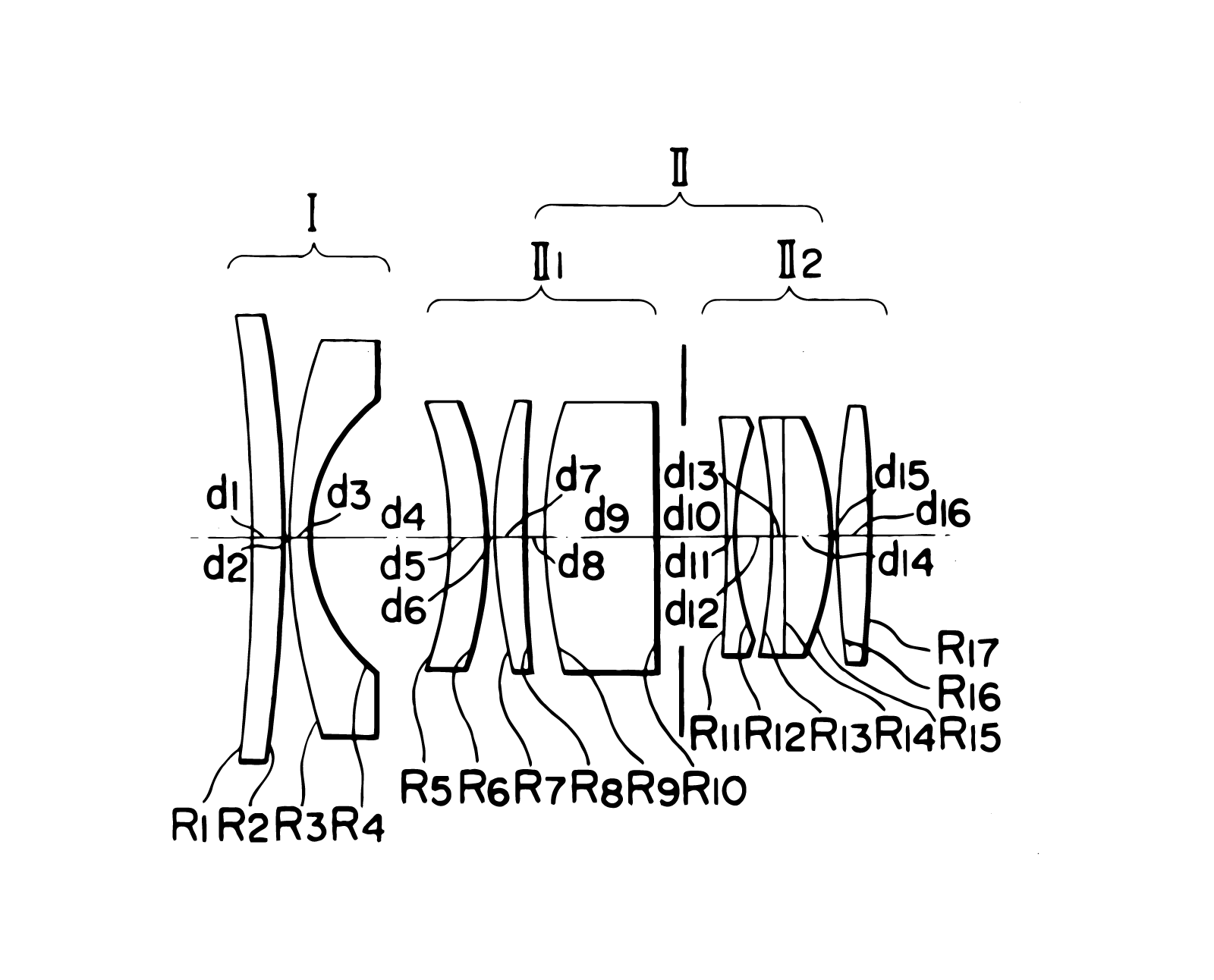
The author of this patent is Akira Tajima from Kawasaki, Japan. When researching him, I found another one of his patents — US3848969A- containing a Canon FD FD35-70mm f/2.8-3.5 S.S.C diagram. According to the Canon Museum, “The world’s first short zoom lens starting from wide angle of 35mm at the time <…> The name of this lens will remain in the history of modern optics. “ It’s evident that Canon thought highly of the lenses Akira Tajima created.
Optical performance
Canon FD 35mm f2 is sharp! I immediately noticed this after a few test shots — they were easy to attain focus using my camera’s focus peaking feature and were contrasty and nice. Sharpness decreases towards the edges of the frame, but I did not mind it that much — it still produces stunning photos in various environments.
Flare control is excellent — even with the sun in the frame, the pictures are still perfectly usable, contrasty and with only slight flaring.
Closeup performance is also good — the Canon FD 35mm f2 maintains sharpness even at the minimum focal distance due to the floating elements.
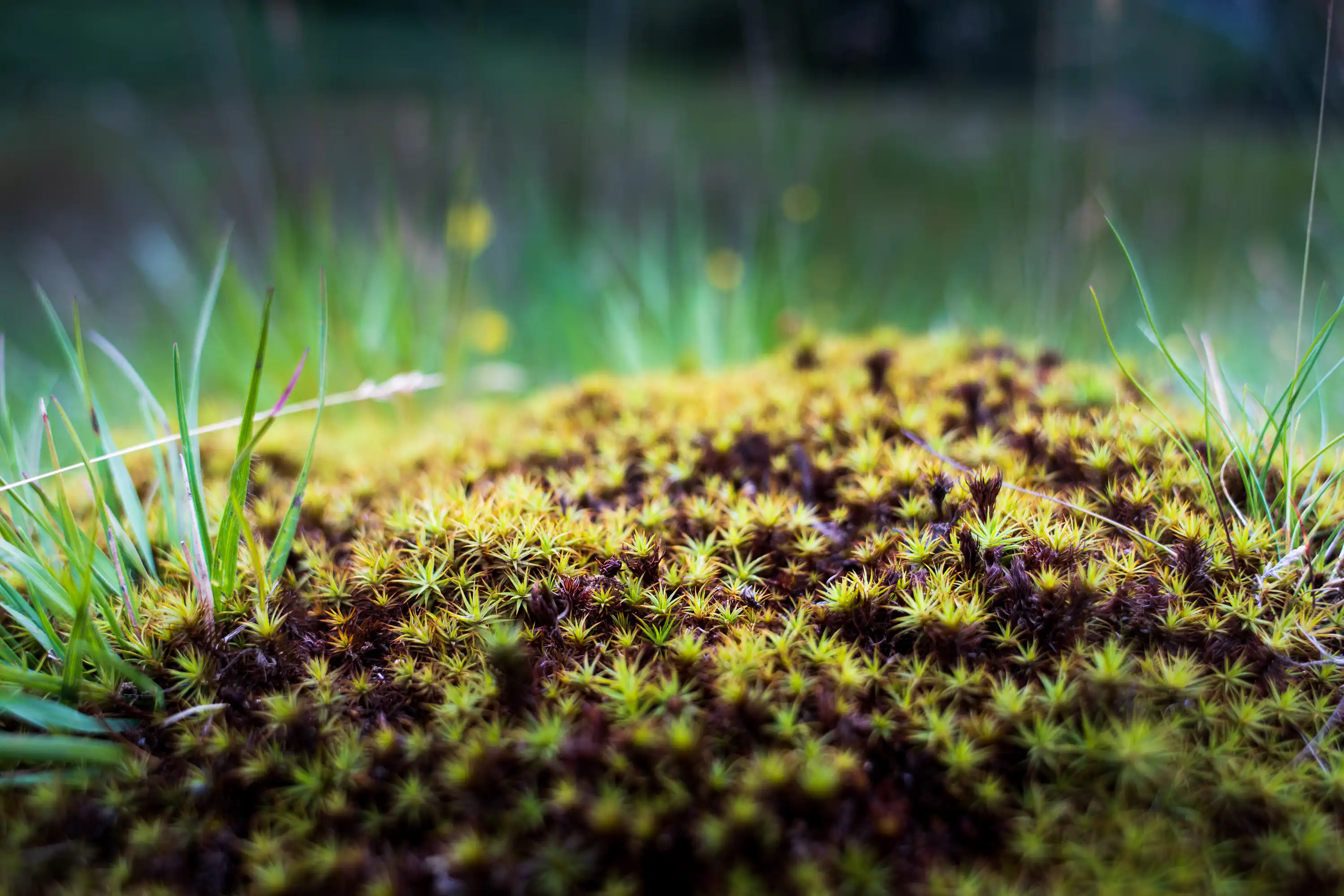
Mechanical look and feel
According to some sources, Canon used nylon bearings, which tend to wear over time, resulting in looseness in the focus ring and focus play. However, I was lucky, and my concave f16 S.S.C. versions of this lens have no such thing – the focusing ring is smooth with no play whatsoever. It could be due to a variation between different versions. If anyone knows more, please comment on how their 35mm f2 is performing in this regard.
Unlike many recent designs, the lenses are metallic rather than plastic. Handling a metal lens with a smooth focusing ring and a tactile aperture ring that effortlessly clicks into place is pure joy. This pleasure draws many people into vintage lens photography. In an age where everything is “fly-by-wire,” it feels more natural and authentic. It also results in better images because you have to think about the photo composition, focus, lens settings, and camera timings, not just point-and-shoot.
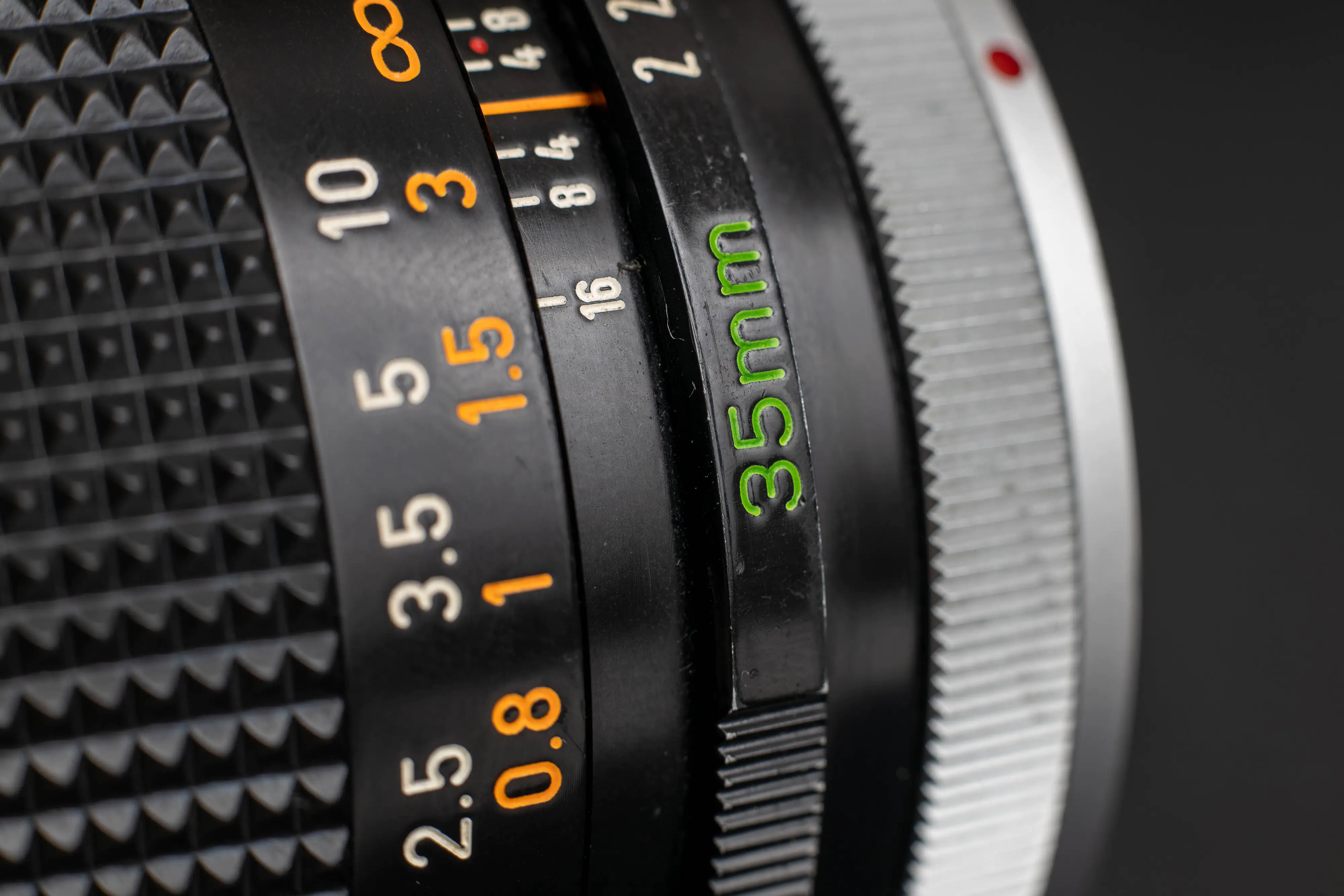

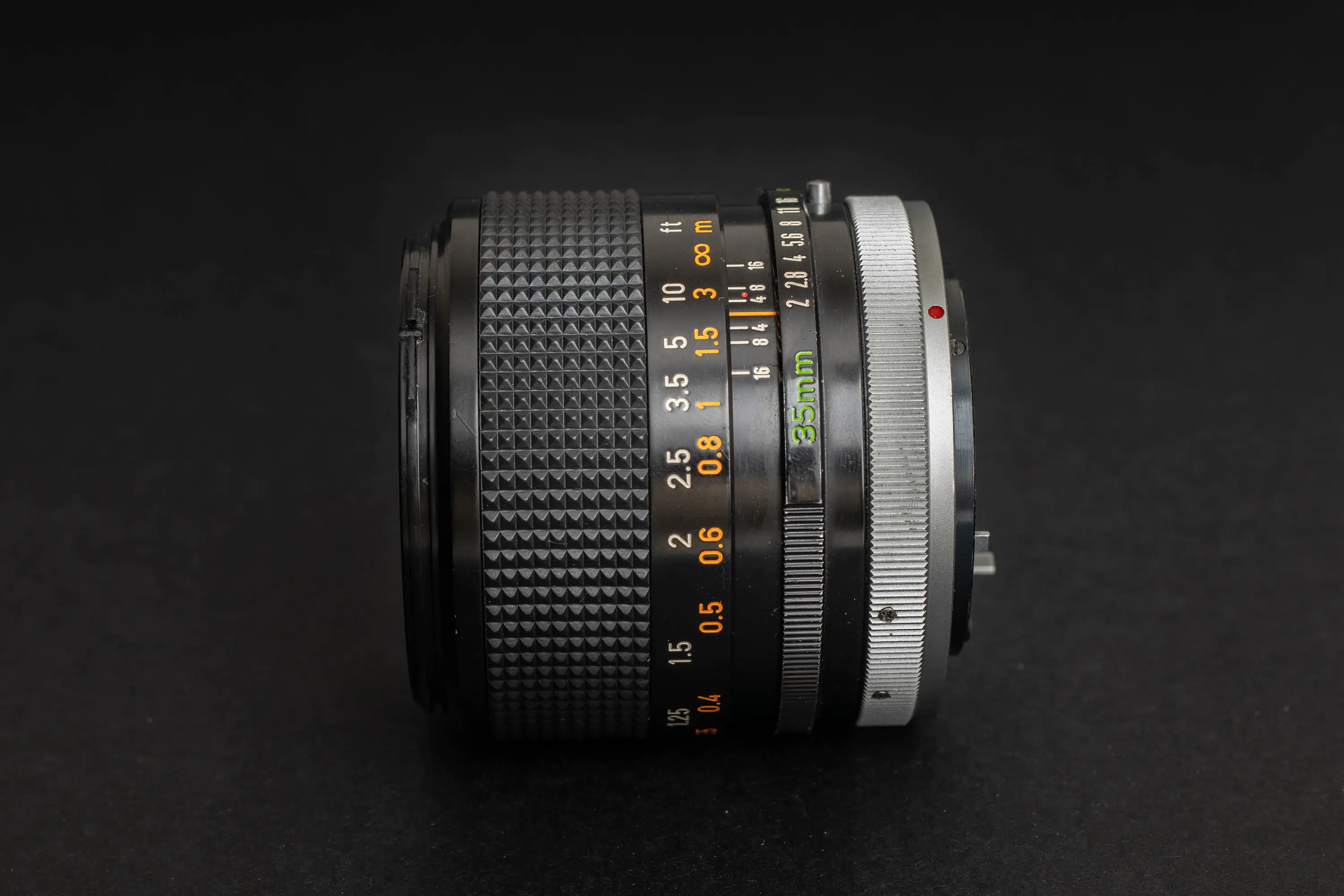
Adapting Canon FD 35mm f2 to modern cameras
Because the Canon FD mount is so commonplace and has a flange distance (https://en.wikipedia.org/wiki/Flange_focal_distance) of 42.0 mm, there are adapters for almost any mirrorless camera. However, there is an issue with adapting FD lenses to SLR cameras with a longer flange distance. For example, Canon EF has a flange distance of 44.0mm, and the adapter must include an optical element, somewhat decreasing the optical performance of the lenses.
Cost
I was lucky to find and buy this lens before its price ballooned and went to the moon. I acquired it for a decent sum. However, it has since significantly increased in price due to people making video sets and vintage lens lovers realising that it is actually a really nice lens. However, some good deals are still out there on eBay — take a look from time to time, and you can get a good deal.
Pros
Sharp center
Noteworthy lens design
Good flare resistance
Cons
Complex distortion
Not so sharp in the corners
Canon 35mm f2 versions in detail
Changes between versions are in bold. The most sought-after version is the one utilising the radioactive glass with thorium and the concave front element – the subject of this review. The radioactivity of the concave versions is slight – the front element emits 1.9µSv/h, while the rear element emits 5.1µSv/h of radiation.
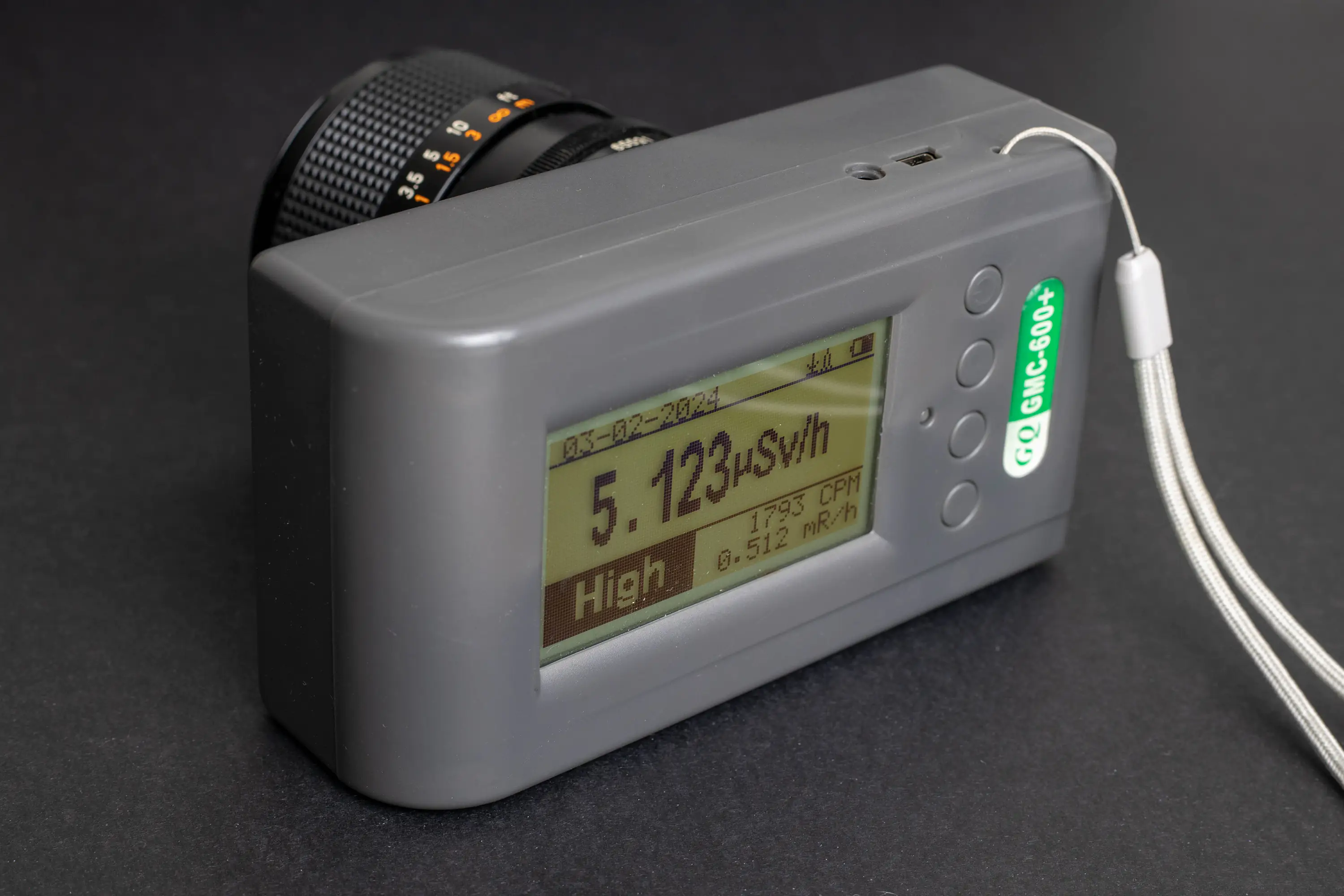
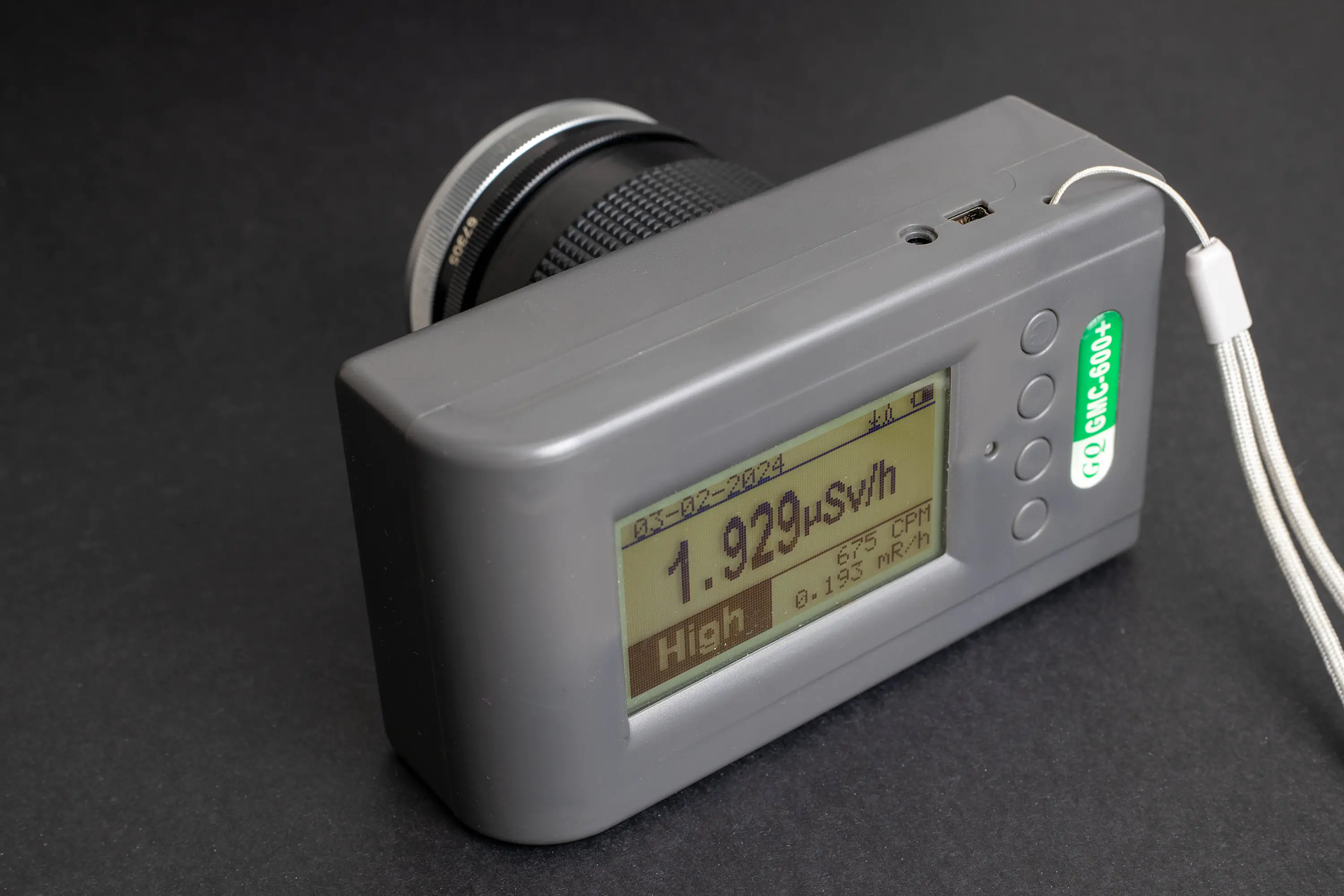
FD35mm f/2 (I) (March 1971)
Radioactive: Yes
Concave front element: Yes
Lens Construction: 9 elements / 8 groups
Maximum Diameter x Length (mm): 64 x 60
Weight (g): 420
FD35mm f/2 (II) (Canon Museum does not provide a date)
Radioactive: Yes
Concave front element: Yes
Minimum Aperture: 16
Lens Construction: 9 elements / 8 groups
Maximum Diameter x Length (mm): 67 x 60
Weight (g): 420
FD35mm f/2 (III) (January 1973)
Radioactive: Yes
Concave front element: Yes
Minimum Aperture: 16
Lens Construction: 9 elements / 8 groups
Maximum Diameter x Length (mm): 67 x 60
Weight (g): 420
Interestingly, according to the Canon Museum, there are these versions (II, III) – there are no images, and nothing in the specifications is different between them.
FD35mm f/2 S.S.C. (I) (March 1973) – Subject of this review
Radioactive: Yes
Concave front element: Yes
Minimum Aperture: 16
Lens Construction: 9 elements / 8 groups
Maximum Diameter x Length (mm): 67 x 60
Weight (g): 370
This lens is sought after because it now has the S.S.C. coating yet retains the concave front element and thoriated glass. The next version does not have either and uses a different optical design.
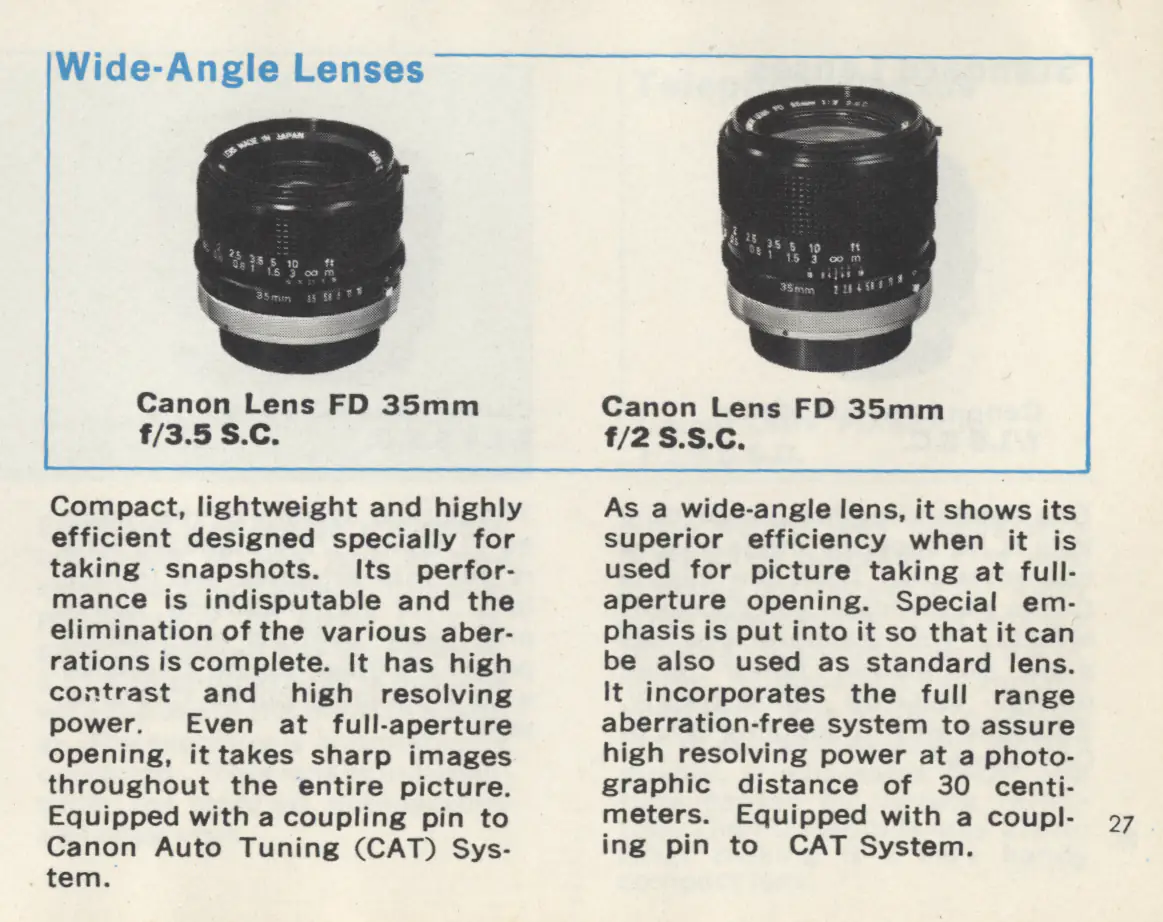
FD35mm f/2 S.S.C. (II) (April 1976)
Radioactive: No
Concave front element: No
Minimum Aperture: 22
Lens Construction: 9 elements / 8 groups
Maximum Diameter x Length (mm): 65.3 x 60
Weight (g): 345
New FD35mm f/2 (December 1979)
Radioactive: No
Concave front element: No
Minimum Aperture: 22
Lens Construction: 10 elements / 8 groups
Maximum Diameter x Length (mm): 63 x 46
Weight (g): 245
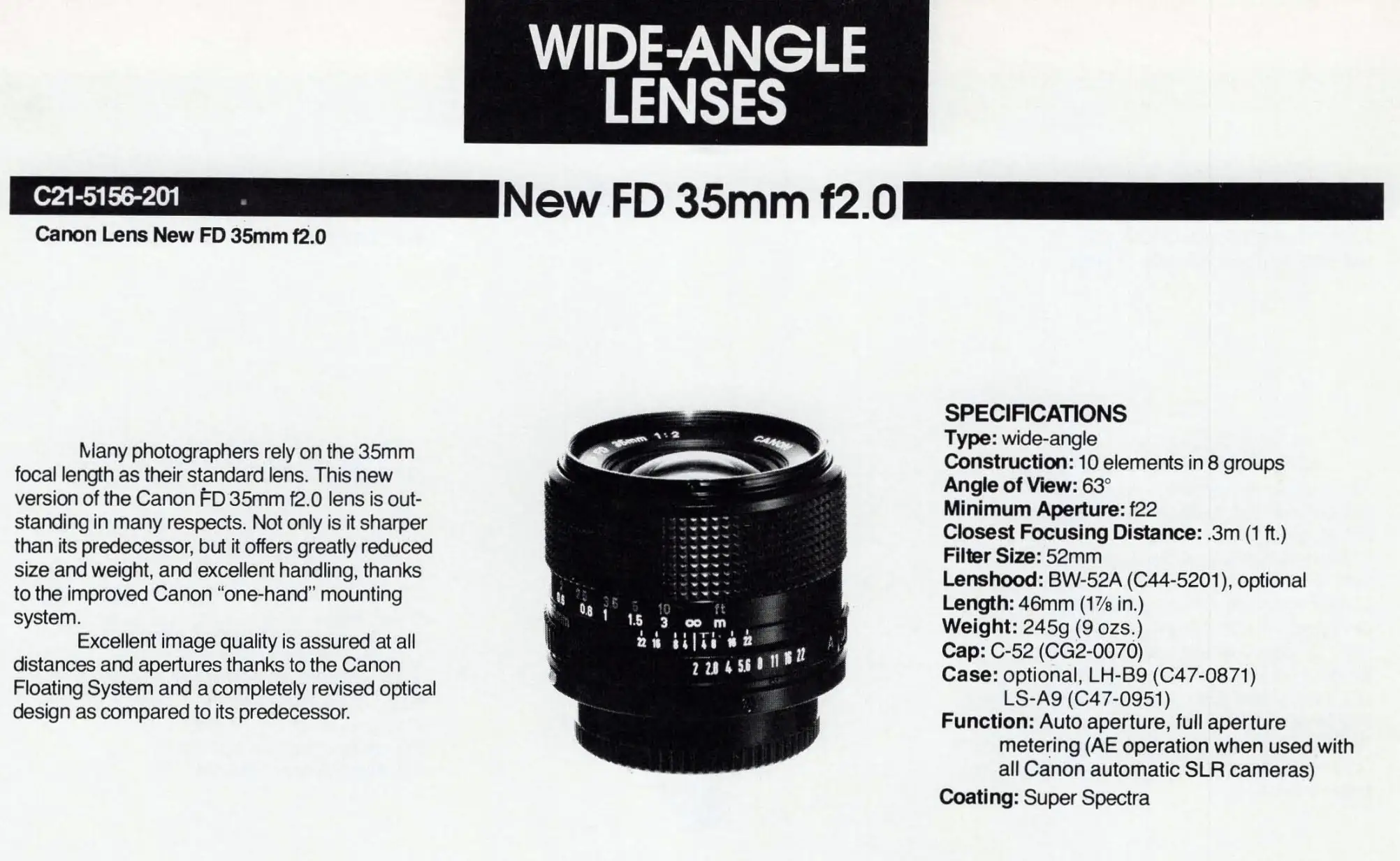
The green ‘o’ and ‘A’
The green ‘o’ on the aperture ring meant the automatic aperture control on the FD lenses. One of my 35mm f2 lenses came with a note in the box saying that Canon has moved to a new notation, and the automatic aperture has an ‘A’ mark from now on.
According to the date codes, both of my lenses were manufactured in 1975. However, one has the green ‘o’, and another has the green ‘A’. Even more interestingly, the one that came with the note and the green ‘A’ has the serial number 65521, and the one with the green ‘o’ has the serial number 67305. Why does the newer lens have the earlier ‘o’ ring? It is going to remain a mystery, at least for now.
Technically, that means there are sub-versions within the concave S.S.C. version.

Conclusion
Canon FD 35mm f2 effortlessly delivers quality images – time and time again. I would not hesitate to take this as my only travel lens (I have! No regrets). Yes, the images are a little soft in the corners at larger apertures; the vignetting is evident when wide open, but considering that this is an f2 lens – it’s to be expected. What this lens delivers is beautiful images, and that is what matters to me. So, even with the elevated prices, it is a worthwhile investment because it will give you joy and create beautiful photos — 5 out of 5.
I wanted the fast Canon FD 35mm in my collection because I had read about its excellent performance. My other FD lenses, such as the Canon FD 55mm f1.2 S.S.C., were stunning, and the 35mm f2 did not disappoint either.
Do you have Canon FD 35mm f2? How would you rate yours? Leave a comment below.
Canon FD 35mm f2 (Concave) Sample images





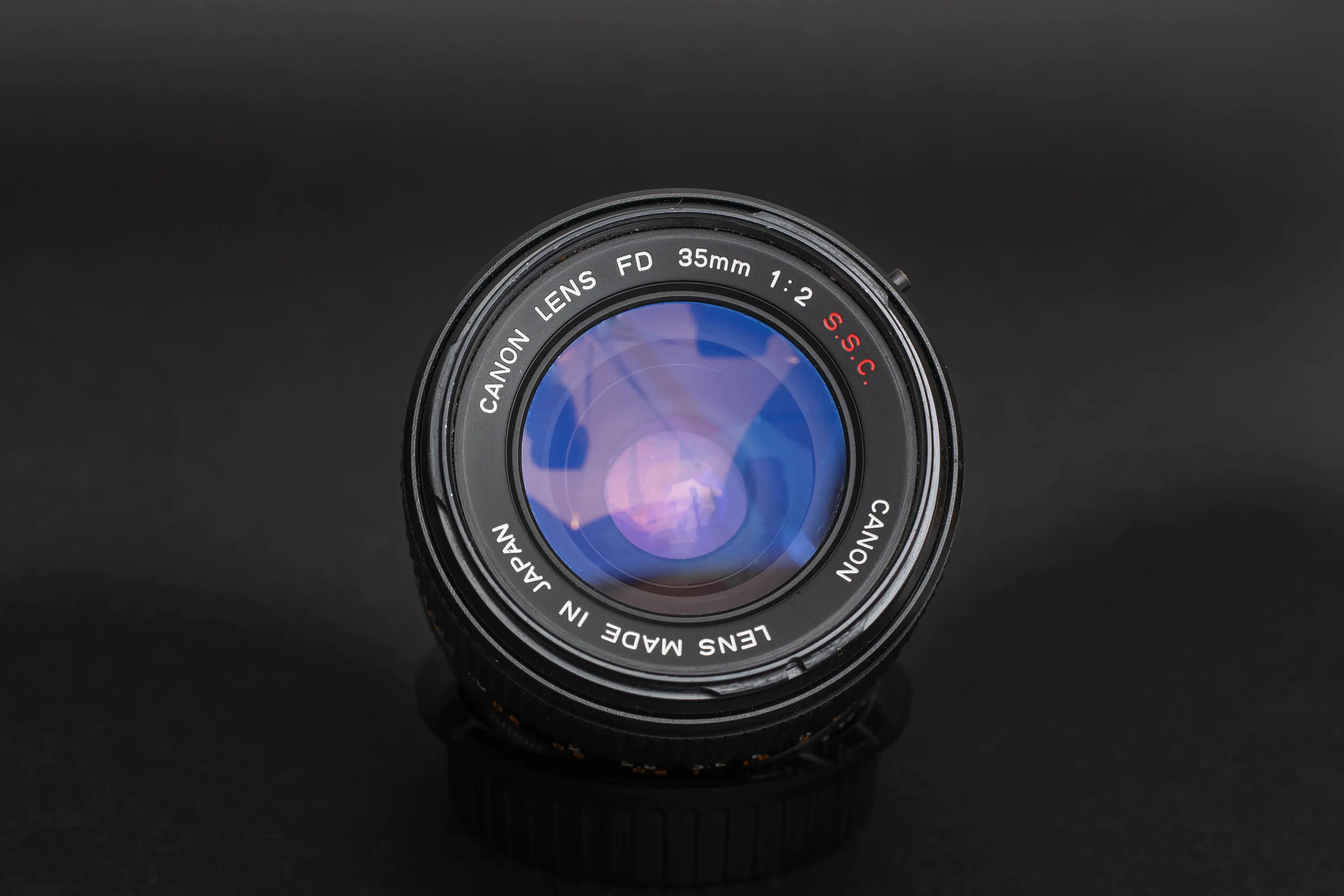
Leave a Reply